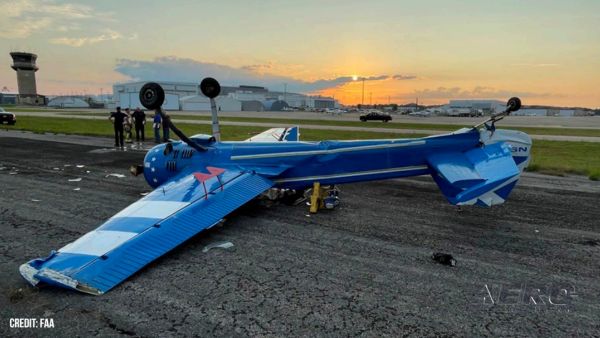Fri, Sep 28, 2012
Nation’s First Aviation Ph.D. Program Researches Critical Issue
Ever since a collision of two airplanes at a Canary Islands airport caused the deaths of nearly 600 people, experts have been trying to do something about unauthorized vehicles or people on airport runways. But the rate of runway incursions keeps rising, and so does the potential of another disaster.

B.J. Goodheart, a 34-year-old student in the nation’s first aviation Ph.D. program at Embry-Riddle Aeronautical University, is determined to figure out why. “Runway incursions are a big deal,” said Goodheart, who recently received funding for his investigation from the Transportation Research Board, a National Research Council body that promotes innovation in transportation through research and advises the President, Congress and federal agencies on transportation issues.
Figures from the FAA indicate that the rate of incursions per million aircraft operations increased from 12.3 to 18.9 between 2005 and 2010. The Canary Islands disaster happened in 1977 when two Boeing 747s collided at Tenerife Airport. One of the airliners was not supposed to be on the runway.
Goodheart, who is combining quantitative data from past incursions with first-hand accounts by pilots who were involved, is one of 42 students in the Embry-Riddle doctoral program, which gives aviation professionals research skills that will enable them to have a greater impact on their industry. “Our mission is to prepare scholars whose research in the aviation field will lead to solutions that benefit others,” said Alan Stolzer, chair of the aviation Ph.D. program, which began in 2010. “They will be able to solve problems in ways they weren’t able to do before. They’ll approach problems in a more scientific manner.”

The degree was ideal for Goodheart, an aviation claims manager for general aviation insurance broker AirSure, where he manages safety and training programs for airport service operators, charter air carriers and corporate flight departments. His Ph.D. research tackles a safety concern of his clients. Goodheart’s fellow doctoral students work in aviation as accident investigators, educators, pilots, regulators, safety managers and technology developers. Like him, they find their Ph.D. dissertation ideas on the job. They’re researching cockpit systems that alert pilots of runway obstructions, the human factor in runway collisions, certification of drones in civilian airspace, teaching better crew communications, multicultural differences in pilot performance, and airline bankruptcy forecasting models.
Students in the Embry-Riddle program take courses online and complete three weeklong residencies at one of the university’s two residential campuses, in Daytona Beach, FL, and Prescott, AZ.
More News
From 2021: The Inside Skinny On What Being An ANN Oshkosh Stringer Is All About By ANN Senior Stringer Extraordinare, Gene Yarbrough The annual gathering at Oshkosh is a right of p>[...]
Pilot Asked The Mechanic To Go For A Test Flight Around The Airport Traffic Pattern With Him For A Touch-And-Go Landing, And Then A Full-Stop Landing On May 7, 2025, about 1600 eas>[...]
From 2010 (YouTube Edition): Skiles Reflects On His Ring-Side Seat To An Historic Event Jeff Skiles, First Officer of US Airways Flight 1549, "The Miracle on the Hudson," was the g>[...]
“The FAA conducted a comprehensive safety review of the SpaceX Starship Flight 8 mishap and determined that the company has satisfactorily addressed the causes of the mishap,>[...]
Fuel Remaining A phrase used by either pilots or controllers when relating to the fuel remaining on board until actual fuel exhaustion. When transmitting such information in respon>[...]
 Oshkosh Memories: An Aero-News Stringer Perspective
Oshkosh Memories: An Aero-News Stringer Perspective NTSB Prelim: Diamond Aircraft Ind Inc DA 40 NG
NTSB Prelim: Diamond Aircraft Ind Inc DA 40 NG Classic Aero-TV: US Airways Jeff Skiles-Making History and Looking To The Future
Classic Aero-TV: US Airways Jeff Skiles-Making History and Looking To The Future Aero-News: Quote of the Day (05.26.25)
Aero-News: Quote of the Day (05.26.25) ANN's Daily Aero-Term (05.26.25): Fuel Remaining
ANN's Daily Aero-Term (05.26.25): Fuel Remaining




